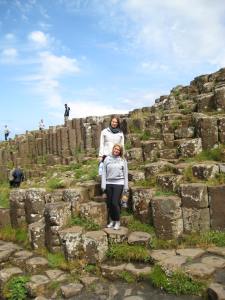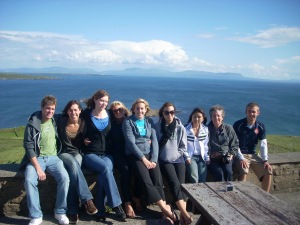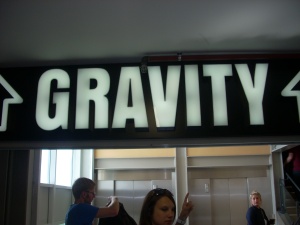
A picture of yours truly acting out a witch sentence. Witch, witch!
Today was our last day on this amazing trip and even though our study abroad family will be breaking up soon, we decided to make our last class day exciting. This excitement came from a ghost tour that we attended. It was called The Witchery Ghosts and Gore Tour and it was just that. We met our tour guide named Alexander Clapperton, which required applause for every mention of that name and a couple other ghostly characters throughout the tour.
It took place on the Royal Mile and added some excitement to a new part of Edinburgh. Being one of the most haunted cities and having so much violent history, there was plenty of gore to discuss. We learned about the witch hunt and the different torture mechanisms society would do to the convicted at that time. A horrific one included putting the “witch” in a barrel and sticking pointed, metal rods into the barrel. From there, the person was rolled down the entire Royal Mile street. They would do this until the person would confess to being a witch.
Clapperton also covered the plague and any disgusting detail that went along with the epidemic. The tour included humor, history, participation and of course ghosts and gore. Overall, it was a great and haunted way to end the trip. Farewell Edinburgh, it will really be a fright to leave.
Filed under: Uncategorized | Tagged: Paige LaBarge | Comments Off on The Darker Side of Edinburgh
































